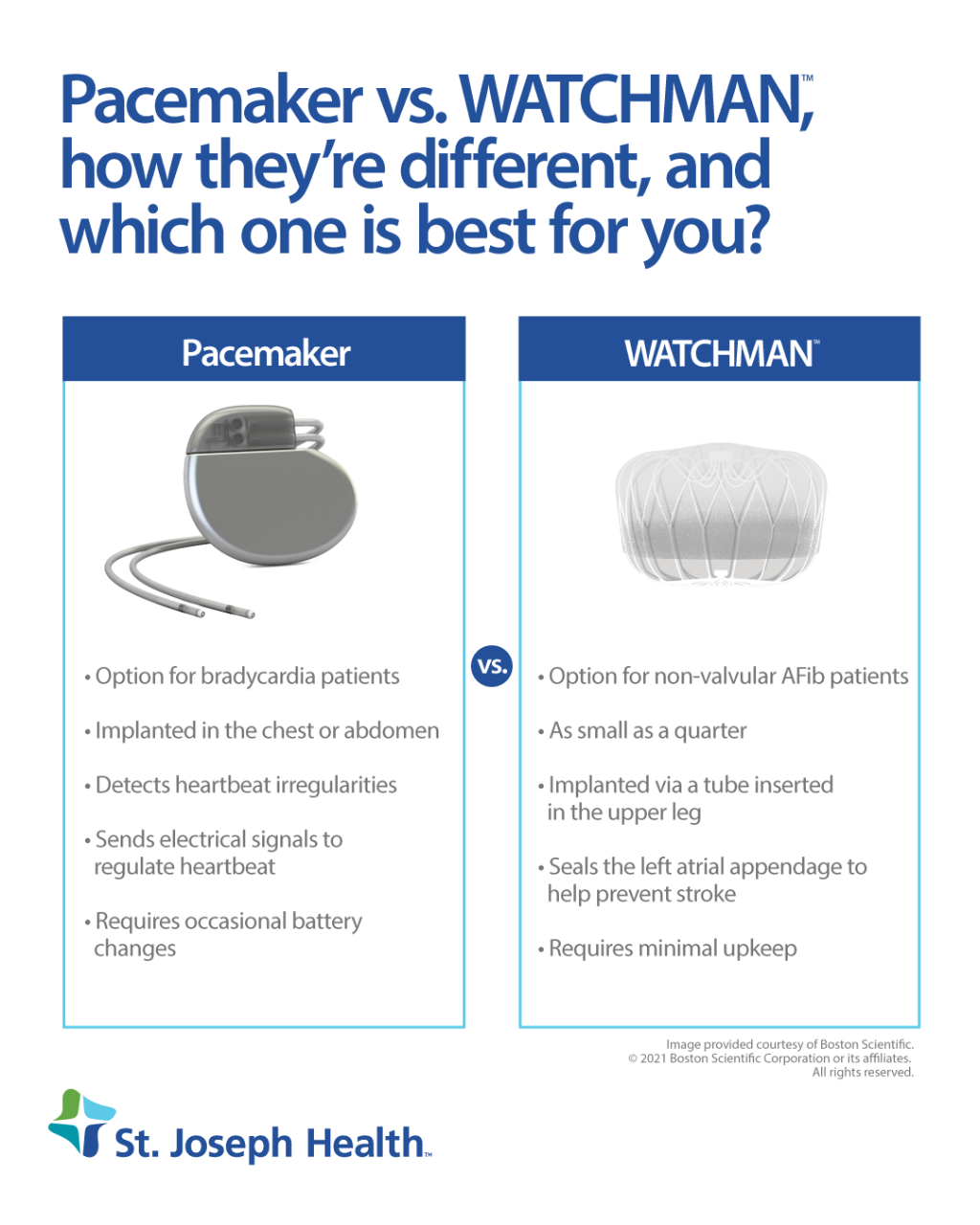Some patients experiencing heart conditions like bradycardia and arrhythmia may have to face the prospect of medication or surgical procedures. However, devices such as pacemakers and the WATCHMAN™ offer convenient and minimally invasive alternatives. Both devices are small and help the heart function, but here are a few notable features that can help patients understand their differences.
What is a pacemaker?
A pacemaker is a small, battery-operated device implanted in the chest or abdomen to detect heartbeat irregularities. It then sends electrical signals to the heart to regulate the beats. Patients can qualify for a pacemaker if they have an irregular heartbeat caused by sinus node disease or heart block.
Pacemakers and bradycardia
This condition is characterized by a slower-than-normal heart rate, with a resting heart rate under 60 beats per minute. Because of the slower heart rate, bradycardia patients sometimes get less blood supply to their brain than normal, which can cause fatigue, dizziness, confusion, shortness of breath, and—in extreme cases—cardiac arrest. A pacemaker will counter this condition by sensing the irregularity, sending an electrical signal to a patient’s heart to get it to beat more regularly.
Refer your patient to a St. Joseph Health cardiologist so they can further discuss their treatment options.
What is the WATCHMAN device?
The WATCHMAN device is a new, innovative piece of technology that gives patients with non-valvular atrial fibrillation a less invasive option to treat their condition. This device requires very little upkeep, and most patients are able to discontinue the use of blood thinners as early as 45 days post-procedure. The WATCHMAN device closes the left atrial appendage (LAA) and no longer allows blood to pool into this pocket in the heart, preventing clots from forming and significantly reducing the risk of stroke or cardiac arrest.
The WATCHMAN for non-valvular atrial fibrillation
Non-valvular atrial fibrillation causes an erratic heart rhythm in response to an irregularity in a heart chamber. Although this condition isn’t usually life-threatening, it can put patients at risk of stroke and heart failure. This risk of stroke is five times higher in AFib patients compared to those with a normal heart rhythm, and well over 90% of strokes in AFib patients are caused by blot clots that form in the LAA.
Refer your patient to a St. Joseph Health electrophysiologist so they can further discuss their qualifications for the WATCHMAN device.
What are the differences between a pacemaker and the WATCHMAN device?
Both of these innovations are proven effective in reducing the risk of cardiac arrest, but what’s the difference? As stated above, a pacemaker uses electrical charges to regulate the heartbeat and requires occasional battery changes. On the other hand, the WATCHMAN works as a plug, uses no electricity, and allows the heart to grow tissue over the heart's left atrial appendage, sealing away the chamber over time and reducing the risk of stroke.
While each procedure has its merits, the decision is based on the patient’s unique medical needs. Patients with non-valvular AFib might find that the WATCHMAN meets their needs and better suits their lifestyle. In contrast, someone with bradycardia caused by sinus node disease might find it more beneficial to have a pacemaker.
St. Joseph Health Regional Hospital is proud to be the first in the Brazos Valley to offer the WATCHMAN procedure. If your patients have more questions about whether they qualify for either device, refer them to a St. Joseph Health cardiologist to discuss their long-term treatment options.
Share this pacemaker vs. WATCHMAN infographic with your patients.





